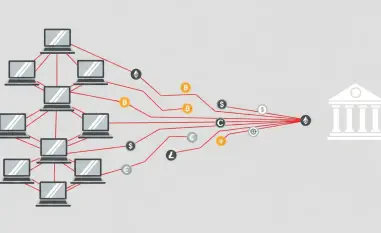Imagine a seemingly harmless email landing in your inbox, titled “Daily Report,” only to silently unleash a devastating cyberattack on your organization. This is the chilling reality of NotDoor, a sophisticated Outlook backdoor crafted by the Russia-backed cyber threat group APT28, also known as Fancy Bear. As state-sponsored espionage continues to escalate in the digital realm, tools like NotDoor highlight the urgent need for robust cybersecurity measures. This review delves into the intricate workings of this malware, examines its implications, and explores how it fits into the broader arsenal of a notorious threat actor.
Technical Analysis of NotDoor’s Capabilities
Core Functionality and Activation Methods
NotDoor operates as a Visual Basic for Applications (VBA)-based malware, specifically targeting Microsoft Outlook to carry out its malicious intent. It leverages event-driven triggers, such as Application_MAPILogonComplete and Application_NewMailEx, to initiate its payloads. Often, activation hinges on specific email keywords like “Daily Report,” which prompt the malware to execute commands discreetly within the familiar interface of Outlook.
Beyond its trigger mechanisms, the design of this backdoor showcases a meticulous approach to infiltration. By embedding itself within legitimate Outlook functionalities, it avoids raising immediate suspicion. This seamless integration into everyday software underscores the challenge of distinguishing between routine operations and covert attacks in modern cybersecurity.
Evasion and Long-Term Persistence
Stealth remains a cornerstone of NotDoor’s effectiveness, achieved through obfuscated code with randomized variable names and custom string encoding. Such techniques make detection by traditional antivirus solutions exceptionally difficult. Additionally, the malware employs DLL side-loading, exploiting signed Microsoft binaries like OneDrive.exe to load malicious components, further masking its presence.
Persistence is another critical strength, as NotDoor modifies Outlook registry settings to disable security warnings and enable macros by default. This ensures that even after system reboots or updates, the malware retains its foothold. The ability to operate silently over extended periods amplifies the potential damage it can inflict on targeted systems.
Data Theft and Covert Communication
The capacity for data exfiltration sets NotDoor apart as a potent espionage tool. It can upload files, execute commands, and transmit stolen information to attacker-controlled email addresses. Hidden directories are created to store pilfered data temporarily before it is emailed out and subsequently deleted, erasing traces of the breach.
Communication channels are equally sophisticated, utilizing DNS and HTTP callbacks for verification and coordination with remote servers. This multi-layered approach to data handling and transmission illustrates a deliberate strategy to maintain control while minimizing exposure. The covert nature of these interactions poses significant hurdles for network monitoring and incident response teams.
APT28: The Masterminds Behind the Threat
Historical Context and Notable Attacks
APT28, linked to Russia’s GRU military unit, has established itself as a formidable player in cyber warfare over the past decade. Known for high-profile operations, such as the interference in the 2016 US presidential election through breaches of political entities, the group has consistently targeted sensitive sectors. From anti-doping agencies to nuclear facilities, their scope of interest spans a wide array of critical infrastructure.
The consistency of APT28’s focus on geopolitical objectives reveals a pattern of state-sponsored motives. Their attacks often align with broader strategic goals, disrupting adversaries and gathering intelligence. This historical backdrop provides essential context for understanding the deployment of advanced tools like NotDoor in current operations.
Adaptation and Innovation in Tactics
Adaptability defines APT28’s approach to cyber threats, with NotDoor representing just one facet of their evolving toolkit. Recent developments, including experiments with AI-driven malware like LameHug, signal an intent to push boundaries further. Such innovations suggest a trajectory of increasing complexity in their methods over the coming years.
The group’s ability to exploit software vulnerabilities and bypass conventional defenses remains a constant challenge. By integrating legitimate software functionalities into their attack vectors, they blur the lines between benign and malicious activity. This ongoing evolution necessitates a proactive stance from defenders to anticipate and counter emerging tactics.
Real-World Implications and Challenges
Targeted Sectors and Global Impact
NotDoor’s deployment reflects APT28’s strategic targeting of sectors with high-stakes data, including political organizations and chemical weapons groups. The malware’s ability to extract sensitive information undetected has profound implications for national security and international relations. Its use in espionage campaigns can shift balances of power without a single shot being fired.
The global reach of these operations amplifies their significance, as affected entities span multiple continents. Past incidents demonstrate how such breaches can influence public opinion and policy on an international scale. The ripple effects of these cyber intrusions extend far beyond immediate data loss, shaping geopolitical landscapes.
Defensive Obstacles and Mitigation Strategies
Detecting a modular and stealthy threat like NotDoor presents substantial challenges for cybersecurity professionals. Traditional security measures often fall short against its obfuscation and persistence techniques. The dynamic nature of its triggers and commands further complicates efforts to identify and neutralize the malware in real time.
To combat this, recommendations from threat intelligence experts include disabling macros by default and closely monitoring Outlook activity for anomalies. Scrutinizing email-based triggers offers another layer of protection against activation. These strategies, while not foolproof, provide a starting point for organizations aiming to fortify their defenses against such advanced threats.
Final Thoughts on NotDoor and APT28’s Legacy
Reflecting on the analysis, it becomes evident that NotDoor stands as a testament to APT28’s relentless pursuit of cyber dominance through sophisticated malware. Its intricate design and seamless integration into everyday software pose significant risks to a wide range of targets. The review process highlighted the persistent danger this threat actor represents, driven by state backing and an unyielding drive for innovation.
Looking ahead, organizations need to prioritize actionable defenses, such as implementing strict macro controls and enhancing email monitoring protocols. Investing in advanced threat detection systems capable of identifying subtle anomalies could offer a crucial edge. Ultimately, staying ahead of APT28 demands a commitment to continuous adaptation and collaboration across industries to safeguard against the next wave of cyber espionage tools.













